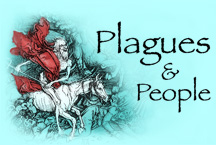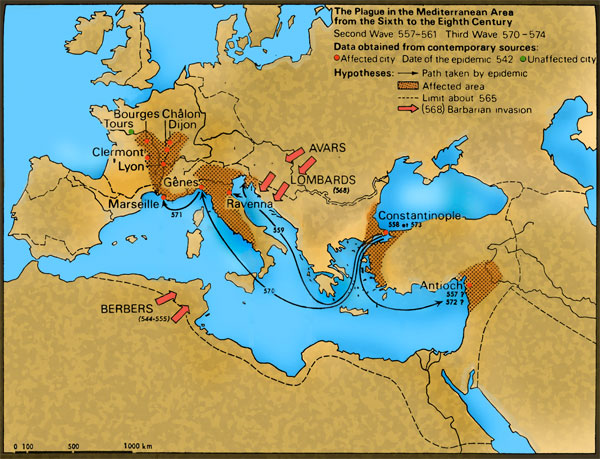...before the plague at Clermont great prodigies terrified that region.
For three or four great shining places frequently appeared about the
sun and the rustics used to call them suns, saying: "Behold, three
or four suns in the sky."...

Sundogs, pillars, arcs and haloes resulting from the
passage of sunlight through ice crystals suspended in the atmosphere.
...Once on the first of October (October 3, 563) the sun was so darkened
that not a quarter of it continued bright, but it looked hideous and discolored,
about like a sack...
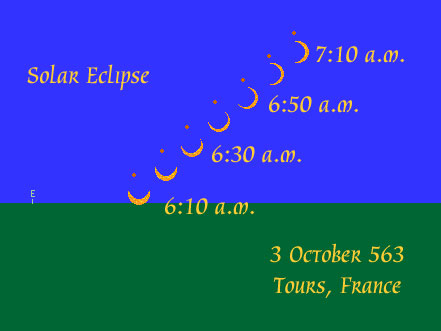
...Moreover a star which certain men call a comet, with a ray like a
sword, appeared over that country through a whole year, and the sky seemed
to be on fire and many other signs were seen...
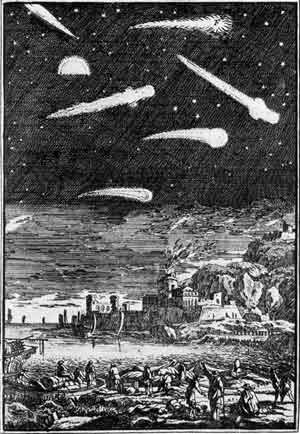
Different comet types -- including those shaped like swords -- illustrated in Description de l'univers, 1683. Two "Great" comets appeared during Gregory's lifetime -- one
in 565 and another in 568. Although the comet of 568 was the brighter
of the two, that of 565 hovered high in the sky all night during the 3 months it was visible.
...In the church at Clermont while the morning watches were being observed
at a certain festival, a bird of the kind we call lark entered, flapping
its wings above the lights, and so swiftly extinguished them all that one
would think they had been taken by the hand of a single man and plunged
into water. The bird passed under the veil into the sanctuary and
attempted to put out the light there but it was prevented from doing so
by the doorkeepers and killed. In the church of the blessed Andrew
another bird did the same with the lighted lamps.
And presently the plague came, and such a carnage of the people took
place through the whole district that the legions that fell could not be
counted.
For when sepulchers and gravestones failed, ten or more would be buried
in a single trench. Three hundred dead bodies were counted one Sunday
in the church of the blessed Peter alone...
...Death was sudden. A wound the shape of a serpent would appear
on groin or armpit and the man would be so overcome by the poison as to
die on the second or third day. Moreover the power of the poison
rendered the victim insensible.
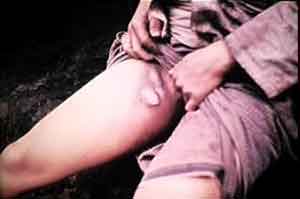
Photograph showing buboes on a modern plague
victim. |
